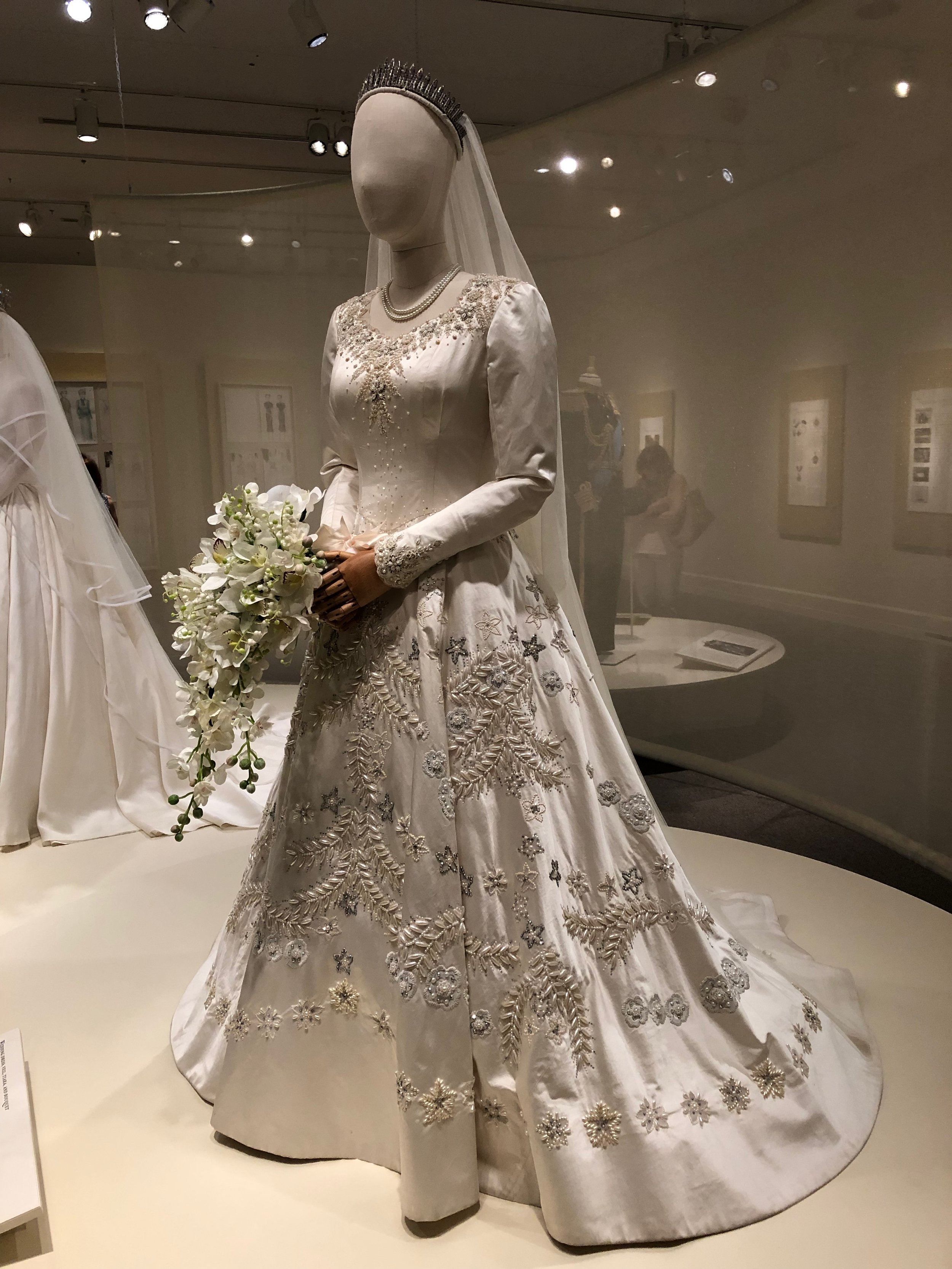This week I returned to Winterthur Museum, Garden, and Library, one of my favorite places for inspiration of every kind. One of their current exhibitions features a selection of costumes from the Netflix series The Crown, which follows the life and reign of Queen Elizabeth II of Great Britain. Costuming the Crown will remain on display through January 5, 2020.
I haven’t watched the series yet, but I always enjoy seeing historical costumes designed for theater and film. Costume designers face so many challenges with time and budgets, and the best ones are adept at creating a big impression on screen or stage with a variety of resources. They’ll paint designs on textiles to replicate embroidery, substitute unexpected materials (I once saw a costume that had used paper doilies for lace along the hem of a crinoline skirt, and it looked fantastic on film), incorporate scraps of vintage garments into new designs, and turn the flimsiest foil into pure gold.
In addition, costume designers must help the actors and actresses build their characters through clothing. While most of the costumes for The Crown are based on much-photographed originals, the designers had to do considerable adaptation. The tall, willowy actresses playing both Elizabeth and her sister Princess Margaret are physically very different from the queen and her sister, and the costumes had to be designed accordingly both to compensate for these differences, and not to jar the viewers’ sense of what “looked right.”
One of the most striking dresses in the exhibition is Princess Elizabeth’s wedding dress. Because this dress was so important in her life and in the series, the designer, Michele Clapton, was given an unusually large budget. Like the original created in 1947 by designer Norman Hartnell, the replica costume was embroidered entirely by hand, with a team of six professional embroiderers working ten-hour days for seven weeks to recreate every beaded star and pearl-encrusted flourish. And the dress is stunning, a true tribute to the skill of those talented, hard-working embroiderers.
However, what really caught my eye was this quote from Ms. Clapton on the placard:
“We were keen to create a small number of costumes as exact copies or to make them as close as possible, particularly the pieces that were well known and well documented. I felt by doing so we could gain the respect and confidence of the viewers, which would then allow us to make creative decisions to aid in the storytelling of the private, undocumented side of the family.”
While I tell my stories with words, not silk and embroidery, I understood exactly what Ms. Clapton meant. Historical accuracy shouldn’t be a game of factual gotcha, but a background that’s so virtually seamless that the hard work of research and recreation is invisible. I write historical fiction, and it’s important to me to make the past as real a place as I can for readers. I’ll spend an entire morning researching to discover if the windows in my heroine’s house opened with sashes or casements, or whether my hero wore spurs or not. It’s those kind of details that help create a fictional world that’s sufficiently substantial to support my story. I want it to feel so effortlessly real that readers will accept it without doubt or thought, and be free to experience the story all along with my characters.
So yes, Ms. Clapton, my goal, too, is to “gain the respect and confidence” of my readers. I hope I succeed as well as you did with this wedding gown!
Above: Wedding Dress, Veil, Tiara, and Bouquet, worn by Claire Foy as Princess Elizabeth. Designed by Michele Clapton for Season I, Episode I of The Crown.
My new historical novel, The Secret Wife of Aaron Burr, is now available everywhere, in stores and online. Order here.


